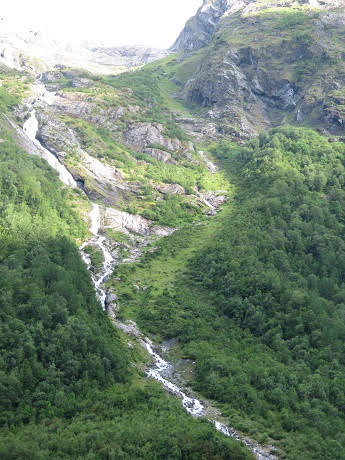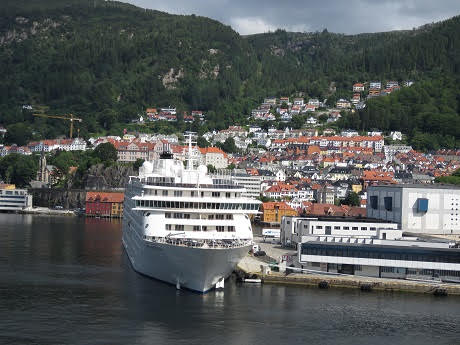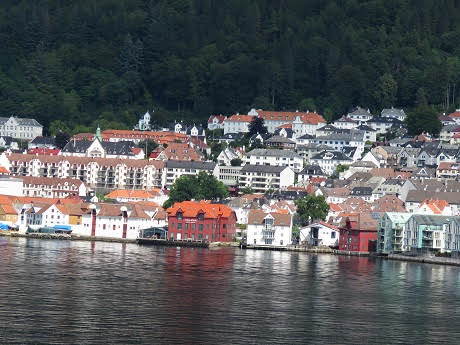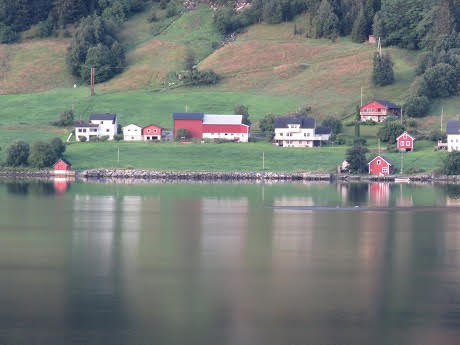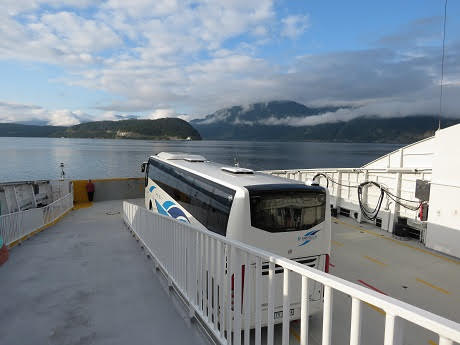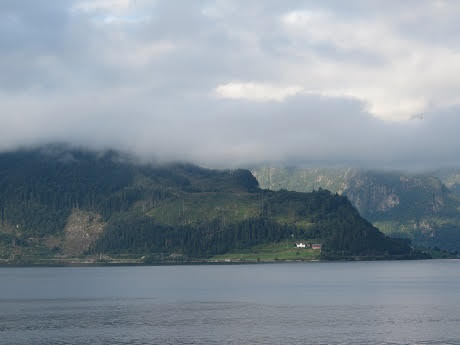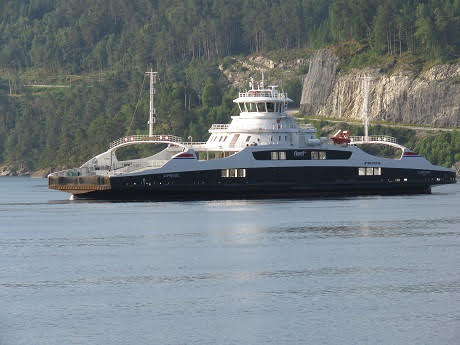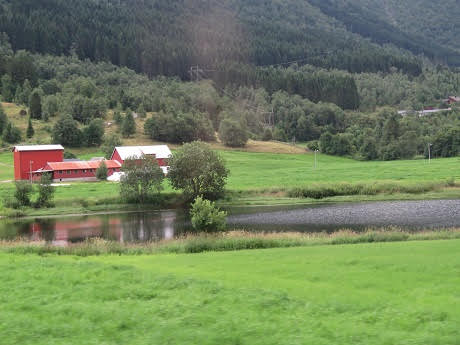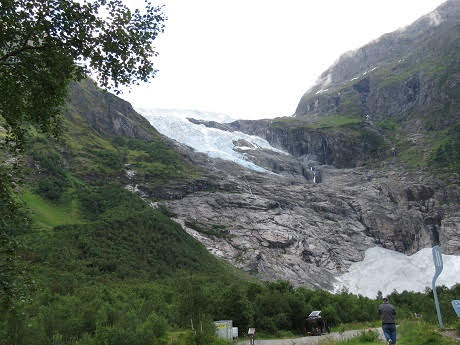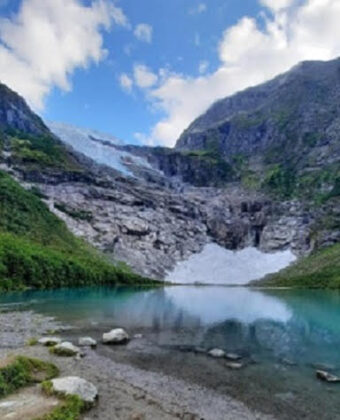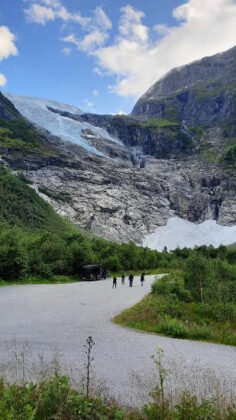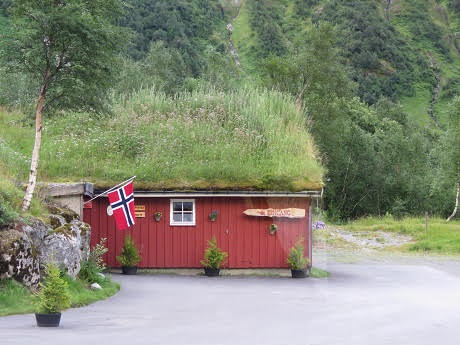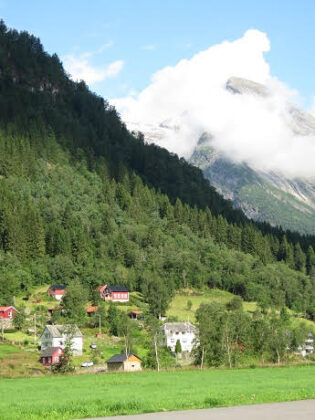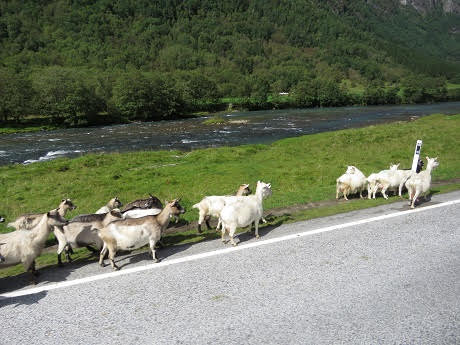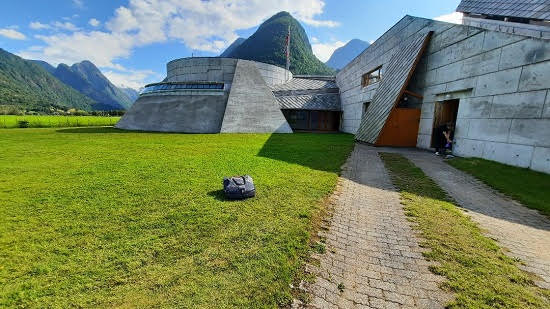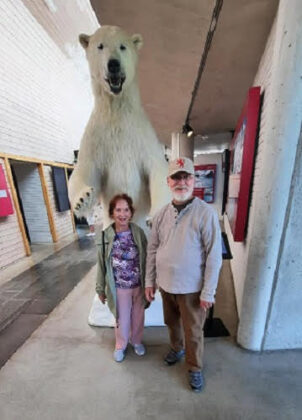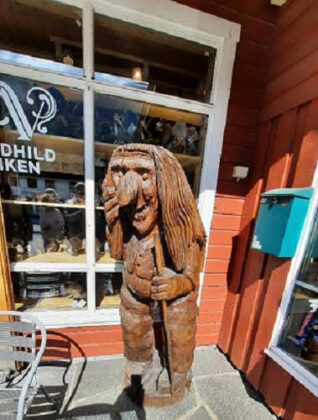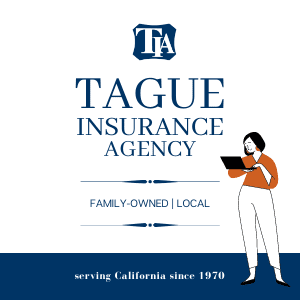By TR Robertson
Day 6 of our cruise into some of the Fjords of Norway and a visit to many of the quaint cities along Norway’s coastline found our ship arriving early in the morning to Bergen, Norway. Bergen is known for its UNESCO World Heritage colorful wooden buildings located in the downtown area close to the old fortress at Bergenhus. The old Hanseatic wharf is a architecturally unique stopping point and one of the most familiar picture stops in all of Norway, highlighted by the colorful red, yellow and white wooden homes and buildings. The town was founded in 1070 by King Olav Kyrre and was Norway’s first real capital in the 13th century. For many years through the Middle Ages the town was the largest in all of Scandinavia. Bergen is also known as the starting point for many of the Norwegian fjords, voted the world’s most unspoiled tourist destination by National Geographic.
One of the tours we had wanted to sign up for, a tour to Hardanger – Queen of the Fjords, was sold out, so we signed up for the Panoramic Bergen bus tour. This tour took us around the city past the old town and a stop high on the hills at Nordnes for a beautiful view of the harbor and wharf of Bergen. Later we will be on another tour into the fjords and to a glacier tomorrow. On the Bergen tour we also drove through several of the tunnels that are throughout Norway. There are over 1,000 tunnels in Norway. Many of the tunnels are miles and miles long and feature special pull-out areas along the way and have blue lights to ease the visibility and assist with the monotony of white lights and dark areas in the tunnels. One tunnel connects Bergen to Oslo and is 15 miles long. The tour guides on the various tours we take always fill in unique information about the area we are visiting and also have interesting bits and pieces of information about the country. For example, we learned that the number one food seller in Norway for locals is not fish, but frozen pizza and tacos. Who would have guessed that? We did stop in a small grocery store in one city and noticed the large number of frozen pizza brands available for purchase. After the morning tour we were back on the ship for our usual afternoon activities, departing Bergen later in the evening for Nordfjordeid, Norway, 89 nautical miles away.
Day 7 was an early start for us as our tour to Boya Glacier and the Norwegian Glacier Museum would last around seven hours. We drove through the Nordfjordeid fjord, driving through several tunnels and arrived at a ferry that would take our bus across the lake heading to Boyabreen. The twenty-minute ferry ride was unique in that the large ferry was electric. We were told that all of Norway was in the process of converting completely to electric and that last year 80% of the new cars sold in the country were electric. Buses would remain gas driven for a while until they can be developed with enough power to drive the steep roadways in the mountainous regions. Not all of the fjords have large bodies of water in them, rather they are long extensions you travel through with steep cliffs surrounding beautiful pastureland, a result of massive glaciers carving out the area. We passed green, fertile pastureland, where crops have a longer growing day in the summer. Many of the small farms also had sheep or goats grazing in the fields. This land of fjords and tunnels is also known for the 450,000 lakes that includes 900 fish farms that produce an abundance of salmon for the country. There are also 2,000 glaciers in Norway, many that are part of massive glacial systems. The Boya Glacier we were traveling to is mainly located at the top of a steep fjord cliff face and is attached to a much larger glacier, the Jostedalsbreen Glacier in the Jostedalsbreen National Park. When our bus arrived, we took a short walk to a small glacial lake and a view of the Boya Glacier high at the top of the fjord cliff face. Waterfalls flowed down the different sides of the fjord and emptied into the lake.
Back on the bus we headed to the small, but uniquely designed, Norsk BreMuseum Norwegian Glacier Museum, located in Fjaerland. The abstract building had an interesting series of displays about glaciers, exploration in the area, a massive stuffed polar bear that was popular for pictures and an amazing 15-minute film with beautiful drone shots of glaciers in and around this area. One note about polar bears, they are not found in this part of Norway and are mostly found on islands far to the north of where we were. One other unusual photo opportunity for some was photos of the automatic electric lawnmower that was programmed to cut the grass around the museum. It resembled a large Roomba Vacuum Cleaner. After a 45-minute stay we were back on the bus for a drive to a small village called Skei where we stopped in a large gift shop/restaurant for lunch. Our group headed to the second floor where we had a tasty trout (not salmon) lunch with local vegetables. We also had time for some shopping and an introduction to the land of Trolls.
The gift shop was full of beautiful sweaters, perfect for the cold weather, as well as every typical trinket a visitor might want to purchase. One of the many items available was a plethora of different troll figures. Trolls date back centuries to Old Norse legends and Scandinavian folklore. Trolls are not particularly friendly to humans. They live in forests and caves, have four fingers and toes and don’t care for being in the sun. They are usually pictured as short, stubby creatures with long hair and large noses. These appearances can vary depending on which part of the Scandinavian country you are in. Lately, there has been an attempt to tone down the Troll appearances and stories, even with cartoons and books making the Trolls friendly. But there are also Troll movies where they are pictured as very unpleasant creatures. Completing our shopping, it was back on the bus for a trip back to the electric ferry and a 20-minute ride to the roadway that would lead us back to Nordfjordeid and the Marina. Back on the ship mid-afternoon I took in another OLife Speaker Series, this time on The Rise of Nations and what happened to the Viking peoples.
After dinner we took in the performance of a young singer from England, Chris Bannister, who gave a wonderful performance of songs from John Denver. Interestingly enough, he knew some friends we have, Jim and Annie Curry, who have a John Denver Tribute band. They will be performing at the North Coast Repertory Theatre in Solana Beach on September 18 & 19. The ship was underway traveling 79 nautical miles to Geirangerfjord, Norway, and a tour that will take us 5,500 feet up from where our ship will anchor to the top of Dalsnibba Mountain where we can look down deep to the fjord farms below the clouds and into the waterways below.
Part III will begin with Day 8 of our trip and a different view of one of the most famous fjord stops in Norway and one of the “windiest” bus trips we have ever experienced.


